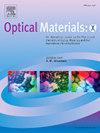薄膜探测器在估算 α 辐射密度方面的应用前景研究
Q2 Engineering
引用次数: 0
摘要
本研究的目的是研究采用紫外光谱法和x射线衍射法测定聚合物径迹探测器记录的氡衰变子产物α-粒子辐射密度的前景。本文介绍了长时间(6个月以内)在不同楼层的房间内对氡衰变子产物α-粒子进行检测的实验结果,通过对子产物α-粒子的选择,不仅可以确定α-粒子随时间的浓度依赖性(记录α-粒子密度的增长),还可以确定用于记录α-粒子的薄膜探测器光谱变化的下限。在实验过程中,建立了光谱学和x射线衍射方法测定的结构变化结果的良好收敛性。这些变化是由α-粒子与聚合物探测器相互作用的过程引起的,其特征是聚合物分子链的变形畸变,导致缺陷的形成,影响光学和电子密度的变化。利用所提出的方法确定了α-粒子的相互作用过程与用作探测器的聚合物薄膜的分子结构之间的联系。结果表明,当α-粒子密度大于104 cm−2时,α-粒子密度的变化最为显著,该值为薄膜探测器在不进行化学腐蚀的情况下识别氡衰变产物的阈值。本文章由计算机程序翻译,如有差异,请以英文原文为准。
Study of the application prospects of film detectors for estimation of α-radiation density
The aim of this research is to study the prospects of using the proposed methods of optical UV spectroscopy and X-ray diffractometry to determine the radiation density of the daughter products of radon decay - α-particles recorded using polymer track detectors. This paper presents the results of experiments on detecting the daughter products of radon decay - α-particles in a room on various floors for a fairly long time (within 6 months), the choice of which made it possible to determine not only the concentration dependences (growth in the density of registered α-particles) over time, but also to determine the lower limit for recording changes in the optical spectra of film detectors used to register α-particles. During the experiments, good convergence of the results of structural changes determined by optical spectroscopy and X-ray diffraction methods was established. These changes are caused by the processes of interaction of α-particles with a polymer detector, characterized by deformation distortion of the molecular chains of the polymer, leading to the formation of defects that affect changes in optical and electron density. The proposed methods were used to determine the connection between the interaction processes of α-particles with the molecular structure of polymer films used as detectors. It was determined that the most significant changes are observed at densities of registered α-particles above 104 cm−2, the value of which is the threshold value for identification of radon decay products using film detectors without chemical etching.
求助全文
通过发布文献求助,成功后即可免费获取论文全文。
去求助
来源期刊

Optical Materials: X
Engineering-Electrical and Electronic Engineering
CiteScore
3.30
自引率
0.00%
发文量
73
审稿时长
91 days
 求助内容:
求助内容: 应助结果提醒方式:
应助结果提醒方式:


